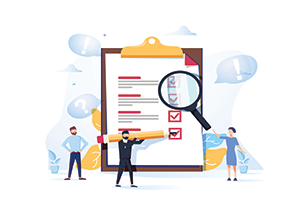
Higher education and technology often have a love/hate relationship. Maintaining existing processes and methodologies challenges many institutions and the prospect of adopting new information systems and technologies can be daunting. The benefits, however, generally outweigh the challenges and often represent a unique opportunity for institutions to increase efficiency, efficacy, productivity, and ROI.
The unique challenges and duties of the office of the registrar necessitate that professionals be at the forefront of reviewing, selecting, and implementing systems and technologies that best complement both their responsibilities and those of the many departments with which they connect.
Assessing and Implementing Technology Leadership in the Registrar’s Office.
The Registrar's
Self-Assessment is a practical guide for registrars to assess a variety of functions, processes, and procedures. The
Self-Assessment was developed for the working professional as a cost-effective and simple way to evaluate your office operations. It allows members to grade their proficiency in several determined core competencies, including managing the registrar’s office, academic policies, grading processes, degree audits, professional development, and more. The
Self-Assessment identifies areas for potential improvement and recommends specific relevant AACRAO resources and products to increase mastery in these areas. Available in both
digital and
physical formats, the
Self-Assessment mimics the approach an outside consultant would use to evaluate the operations of a registrar's office.
Chapter 7 of the Registrar’s Self Assessment, Information Technology and Technology Leadership, aims at giving registrar’s a solid foundation from which to make decisions about selecting, adopting, and implementing new technologies, and taking leadership in the overall process.
Some of the guiding principles for this chapter include:
- Successful system implementation and use requires the participation of many individuals and departments across an institution, so lines of responsibility should be clearly delineated and followed.
- Registrars should work to ensure systems remain integrated and protected by involving Information Technology in technology decisions, security and access decisions, and maintenance.